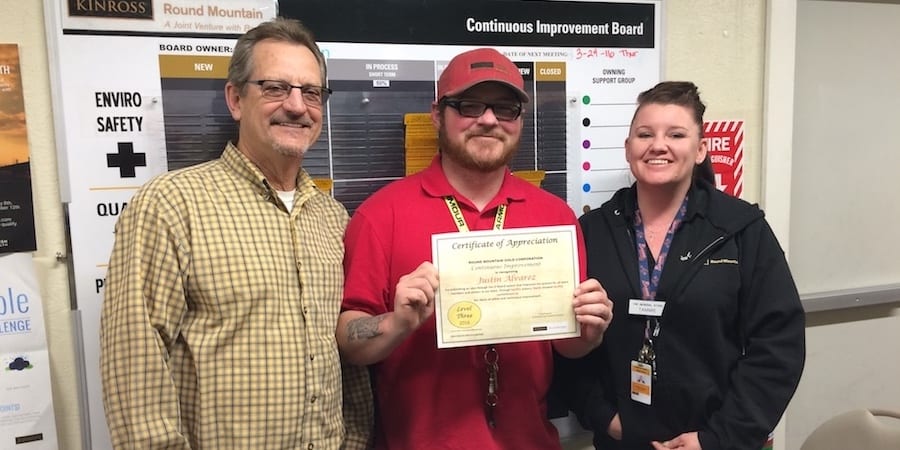
Deploying strategic metrics in operations
FEATURE – Using the example of a chain of pizzerias, the author explains why “slicing the elephant” is the approach you want to follow when it comes to deploying strategic metrics in operations.
Words: Szabolcs Molnár, President, Lean Institute Hungary
As we support organizations on their lean journeys, we often see how, in response to a gap in a Key Performance Indicator (KPI), people tend to immediately start the root cause analysis, expecting the why questions to have a miraculous effect. In our experience, however, the KPI level is too complex to allow for a swift identification of the true causes of a problem. It is necessary to narrow down the scope of the problem itself – in other words, slice the elephant.
In this article, I’d like to share a simple example that will show why the deployment of strategic metrics is so important and how it should be done at operations level.
Imagine you are the owner of a fast-growing chain of pizzerias, inaugurating restaurants one after the other. Your biggest competitive advantage is speed of delivery. Your motto is “30 minutes from ring to bell”, which is what you advertise to customers: no more than 30 minutes will pass between the phone call and the delivery, lest the pizza be on the house.
One of your main KPIs in the business is revenue. Every month, your accountant sends you a breakdown of the revenue of each pizzeria over the course of the previous month. At one point, you notice that the revenue of restaurant #23 has decreased by 17% compared to the previous month. You phone the restaurant manager to inform him and ask him what the possible reasons for the drop might be. He apologizes and says he does not know the answer.
The manager now has two options. One is to summon his employees, inform them of the dismal result from the previous month, and ask everyone to do better (whatever that means). Despite their best efforts, however, the following month revenue falls even more.
NARROW DOWN THE PROBLEM: KPI – PI – I
Another option for the manager is to try to understand the origin of the revenue variation. He knows that revenue is the result of the performance of several business processes. The first step is to look at the main processes of the restaurant and what indicators are specific to its performance – these are called Process Indicators (PI).
The restaurant’s most important process is, arguably, the fulfilment of customer orders. It should run like clockwork, as it what ensures your advantage over the competition. Once examining this process closely, the manager realizes that the planned 30-minute “ring-to-bell” lead-time is actually 40 minutes, which means there is currently a 10-minute gap between the actual and the planned or expected status.
Since this process is the combination of the performance of a number of workflows, your manager continues to narrow down the problem. He examines each of the building blocks of the process, i.e. the individual work contents of each block. Their required timeframe will be the Indicators (I).
The 30-minute process is planned to look like this:
- 5 minutes: taking the order, preparing the pizza
- 10 minutes: baking the pizza
- 5 minutes: boxing, printing the receipt, mounting the motorbike
- 10 minutes: delivery
But this is what the manager actually measures:
- 5 minutes: taking the order, preparing the pizza
- 20 minutes: baking the pizza
- 5 minutes: boxing, printing the receipt, mounting the motorbike
- 10 minutes: delivery
A deeper analysis shows that the variation and the negative impact on the lead-time are generated at the pizza baking stage, which in turn has a major impact on revenue: in an increasing number of cases, you deliver pizza to the customers for free because of the delay. In addition, some of the customers are leaving because other market players can also deliver within the 40-minute timeframe you are offering.
TIME FOR THE WHYS: THE POINT OF CAUSE
It is worth starting to look for the causes of the delay in the pizza baking operation, to understand why baking a pizza takes twice as long as it should. For instance, one the heating coils in the oven might have burnt out. Had we asked why at the “KPI level” – the one concerning revenue – we would have been left guessing as to the reasons for the worsening of our performance.
An additional advantage of making employees aware of what is expected of each activity (e.g. baking time/pizza or number of pizzas baked/hour) is that the first delayed pizza can act as an alarm bell and represent an early indication that something is wrong. This way, we can intervene immediately when one of the two heating coils has burnt out, rather than noticing the problem a month later when it has already had an impact on revenue (KPI).
YOU CANNOT SOLVE PROBLEMS AT KPI LEVEL
Of course, things in real life are typically more complicated, but the idea behind this simple story is that the more we can keep our finger on the pulse of our processes – know what is happening now vs what should be happening – the sooner we can start troubleshooting and take corrective action whenever something does not go according to plan.
Remember, you cannot solve problems at KPI level! KPIs behave like rear-view mirrors and provide you with a historical overview of the performance of a strategic pillar in your company. Moreover, with reports often generated monthly, we get that visualization of the situation only 12 times a year. That’s how we decide which way to steer the boat next month. This way, our very important decisions end up being based on assumptions, only because in the absence of PI- and I-level indicators we will have no idea of what caused a KPI-level indicator to deteriorate.
This article is also available in Hungarian here.
THE AUTHOR

Read more


FEATURE – As her new book comes out, the author discusses how it is people who breathe life into an organization and how much a leader’s behavior can influence them.


FEATURE – The Continuous Improvements Boards at the Round Mountain mining site have been critical to shifting the company's culture... the secret, it turns out, is always providing feedback on people's suggestions.


FEATURE - Can a company be considered lean if its improvement efforts result in layoffs? The author answers this frequently asked question drawing from his own experience dealing with organizations.



INTERVIEW – CI&T is a very successful Brazilian IT and software engineering company that has found in lean thinking a way to build on its agile work while better approaching leadership development.

